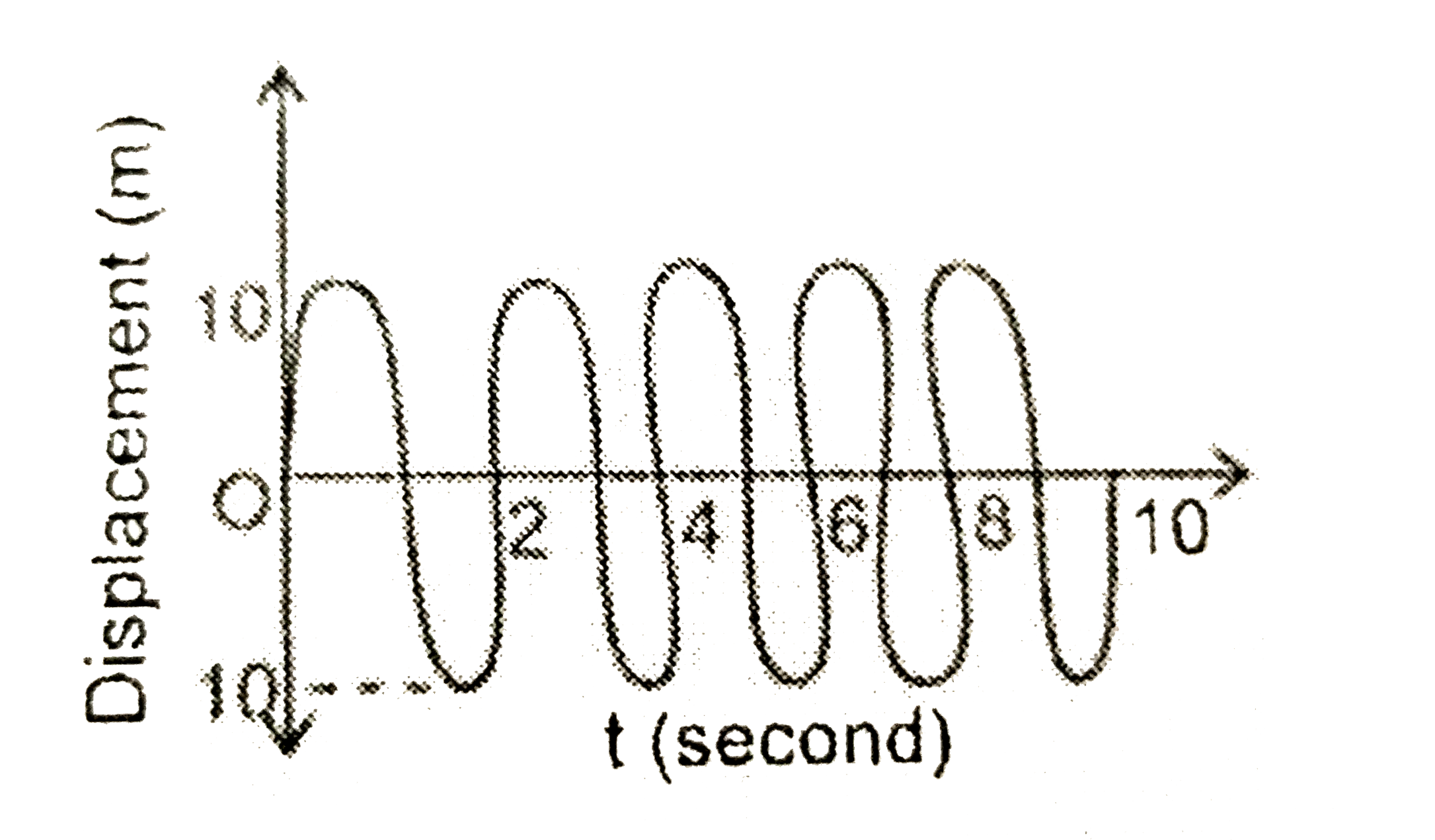When an oscillator completes 100 oscillations its amplitude reduced to 13 of initial values. What will be amplitude, when it completes 200 oscillations :
18
23
16
19
The correct Answer is:C
This is a case of damped oscillations as the amplitude of ocillations is decreasing with time.
Amplitude of oscillations at any instant t is A=A0e−bt/2m where A0 is the initial amplitude of oscillations and b is the damping constant.
Now, when t=100T,A=A03 (T is time period)
Let the amplitude be A, at t=200T i.e. after completing 200 oscillations.
∴A=A03=A0e−100Tb/2m ...(i)
and A.=A0e−200Tb/2m ...(ii)
From (i). 13=e−100Tb/2m
From (ii), A.A0=e−200Tb/2m=19orA.=A09
∴ The amplitude will be reduced to 1/9 of initial value.
Topper's Solved these Questions
- OSCILLATIONS AND WAVES BOOK - MTG GUIDECHAPTER - OSCILLATIONS AND WAVES EXERCISE - CHECK YOUR NEET VITALS
25 Videos
- OSCILLATIONS AND WAVES BOOK - MTG GUIDECHAPTER - OSCILLATIONS AND WAVES EXERCISE - AIPMT / NEET MCQs
43 Videos
- OSCILLATIONS AND WAVES BOOK - MTG GUIDECHAPTER - OSCILLATIONS AND WAVES EXERCISE - AIPMT / NEET MCQs
43 Videos
- MOTION OF SYSTEM OF PARTICLES AND RIGID BODY BOOK - MTG GUIDECHAPTER - MOTION OF SYSTEM OF PARTICLES AND RIGID BODY EXERCISE - AIPMT / NEET (MCQs)
37 Videos
- PHYSICAL WORLD AND MEASUREMENTBOOK - MTG GUIDECHAPTER - PHYSICAL WORLD AND MEASUREMENTEXERCISE - AIPMT / NEET MCQ
14 Videos
Similar Questions
In dampled oscillation , the amplitude of oscillation is reduced to half of its initial value of 5 cm at the end of 25 osciallations. What will be its amplitude when the oscillator completes 50 oscillations ?
Hint :A=A0e−bt2m , let T be the time period of oxcillation
Case -I :A02=A0e−bx25T2m
or 12=e−25bT2m ......(i)
Case -IIA=A0e−b×50T2m
A0(e−25bT2m)2
Use euation (i) to find a .
View SolutionIn dampled oscillations, the amplitude of oscillatinos is reduced to one-fourth of its initial value 10cm at the end of 50 oscillations. What will be its amplitude when the oscillator completes 150 oscillations ?
View Solution
Knowledge Check
When an oscillator completes 100 oscillations its amplitude reduced to 1/3 of initial value. What will be its amplitude, when it completes 200 oscillations?
A1/8B2/3C1/6D1/9When a dampled harmonic oscillator completes 100 oscillations, its amplitude is reduced to 13 of its initial value. When will be its amplitude when it completes 200 oscillations?
A15B23C16D19The time taken to complete 100 oscillations is ______ s.
 A100B200C50D25
A100B200C50D25
In dampled oscillations, the amplitude of oscillation is reduced to one-third of its initial value of 9cm at the end of 100 oscillations. What will be its amplitude of oscillation in cm when it completes 200 oscillations.
View SolutionIn damped oscillations, the amplitude is reduced to one-third of its initial value a0 at the end of 100 oscillations. When the oscillator completes 200 oscillations ,its amplitude must be
View SolutionWhen a particle in linear S.H.M. completes two oscillations, its phase increases by
View SolutionAt resonance, the amplitude of forced oscillations is
View SolutionIn a damped harmonic oscillator, periodic oscillations have ………. amplitude.
View Solution
